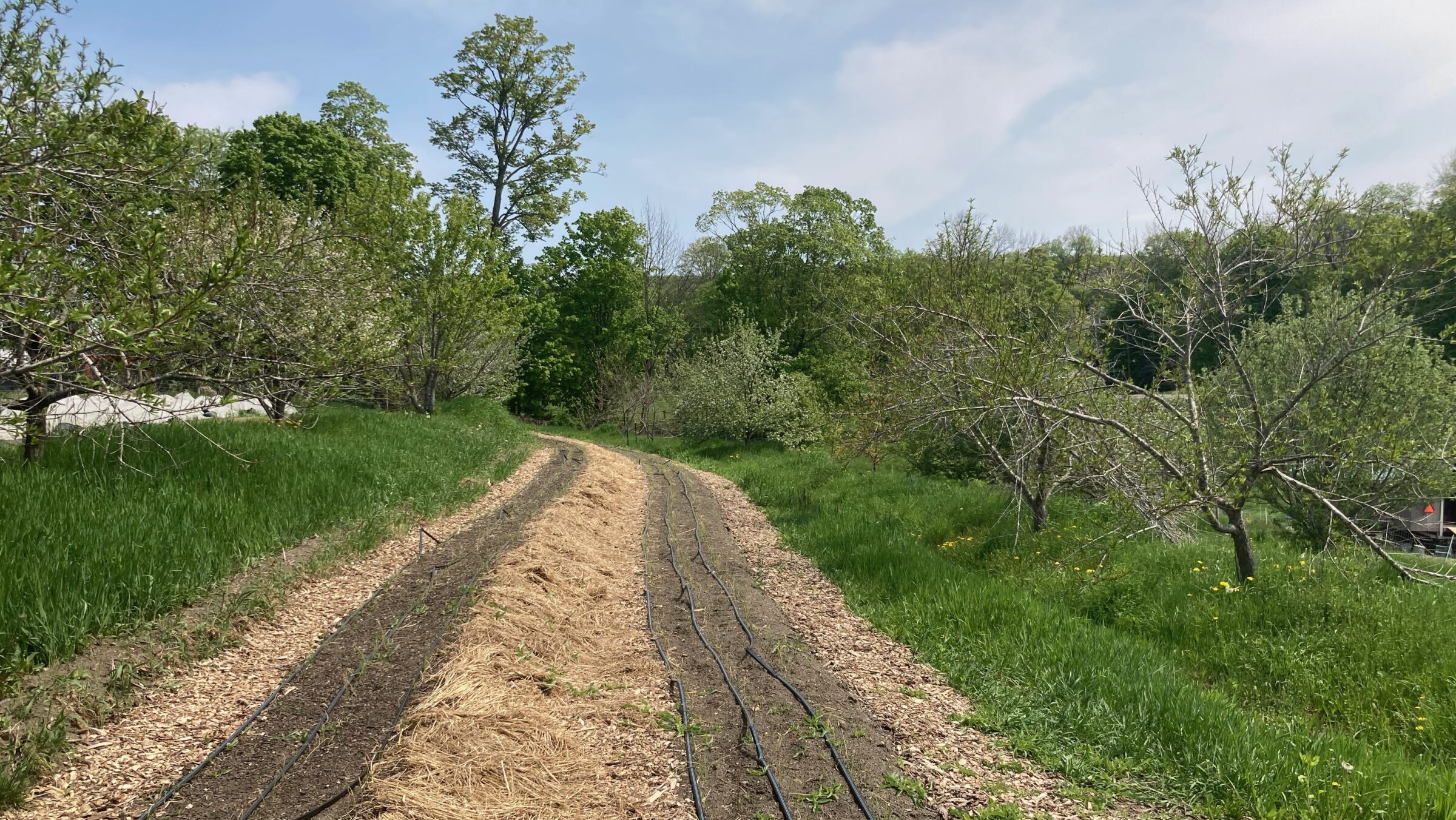
9. Soil and Water
Soil and water are what will primarily nourish your newly planted trees and shrubs for the rest of their lives. Let’s dive in to what that looks like on the ground!
Water
Adequate irrigation and drainage is critical for healthy tree growth and must not be overlooked in the design and layout of your system. Newly planted trees need an average of 1” water per week during the growing season (April-October). Each site will vary considerably in terms of the water-holding capacity of the soils, exposure to evaporative wind and sun, and existing hydrology and drainage patterns. Different tree species also vary in their ability to tolerate extended periods of wet or dry conditions.
Active vs. Passive Irrigation
If you have access to a well and pump on site, you can set up drip irrigation in your field. The benefit of actively irrigating your trees is the guarantee that they will receive adequate water throughout the growing season. However, depending on the size of your planting, installing temporary or semi-permanent drip lines can be costly and vulnerable to damage from vehicles, equipment, or rodents in the field. If access to pressurized water is unavailable, a tree watering mat can be periodically filled to seep out slowly, thus extending the amount of time in between waterings.
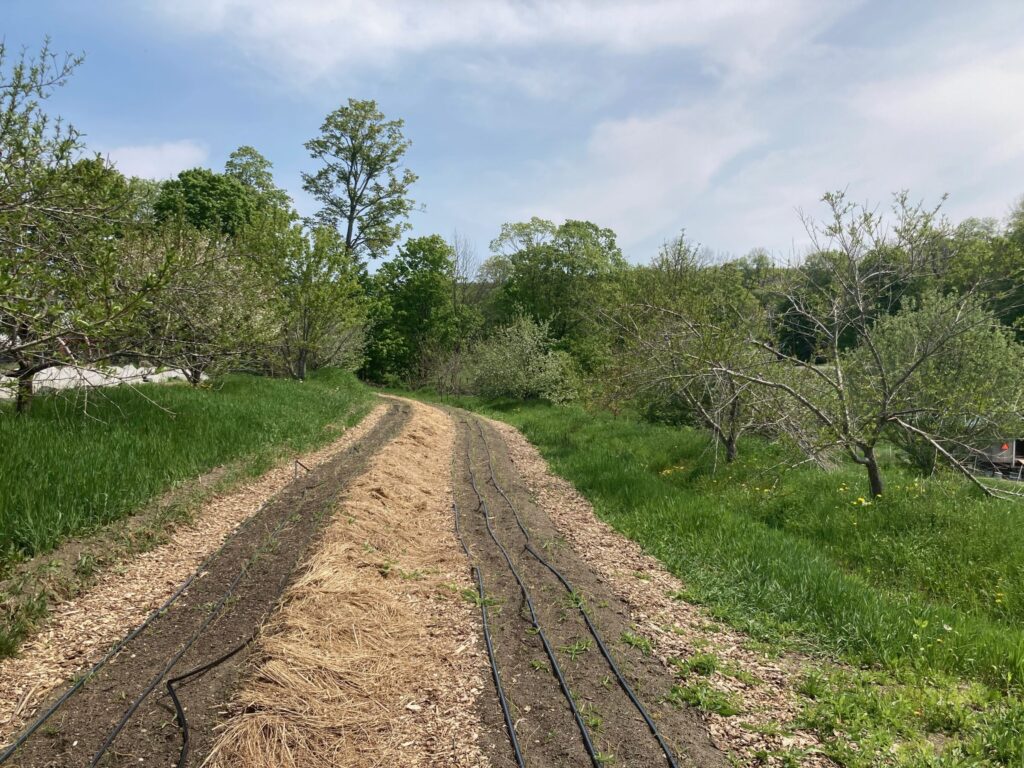
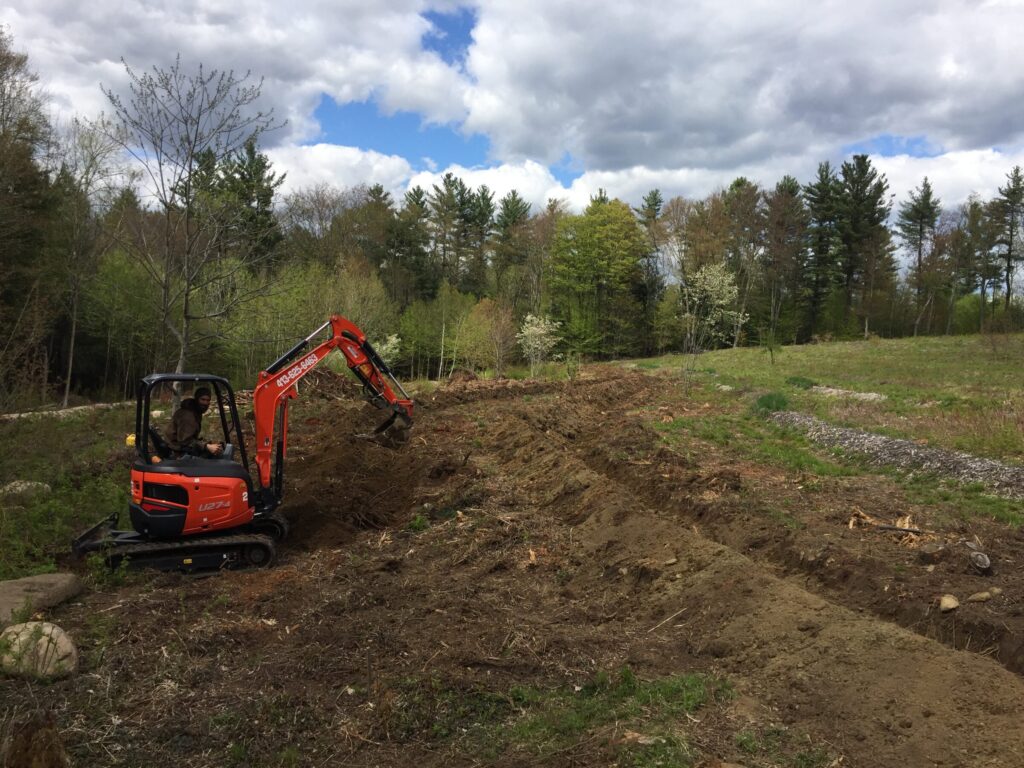
For larger plantings where such products would be cost-prohibitive, there is a range of passive irrigation options to consider, many of which will help you conserve water even with an active irrigation system. These include using hügelkultur, polyculture, mulch, swales, keyline plowing, windbreaks, and rocks. Even a small water basin dug next to a tree can help increase water availability for a newly planted tree. It will not protect the tree from drought, but is still an effective way to extend moisture availability between rainstorms.
Drainage
Having too much water is just as bad as not having enough. Fields that tend towards wetter conditions should be evaluated for soil composition and compaction. While drainage ditches can be an effective intervention in the short term, a rigorous soil health improvement program is more likely to reduce compaction and increase water infiltration over time.
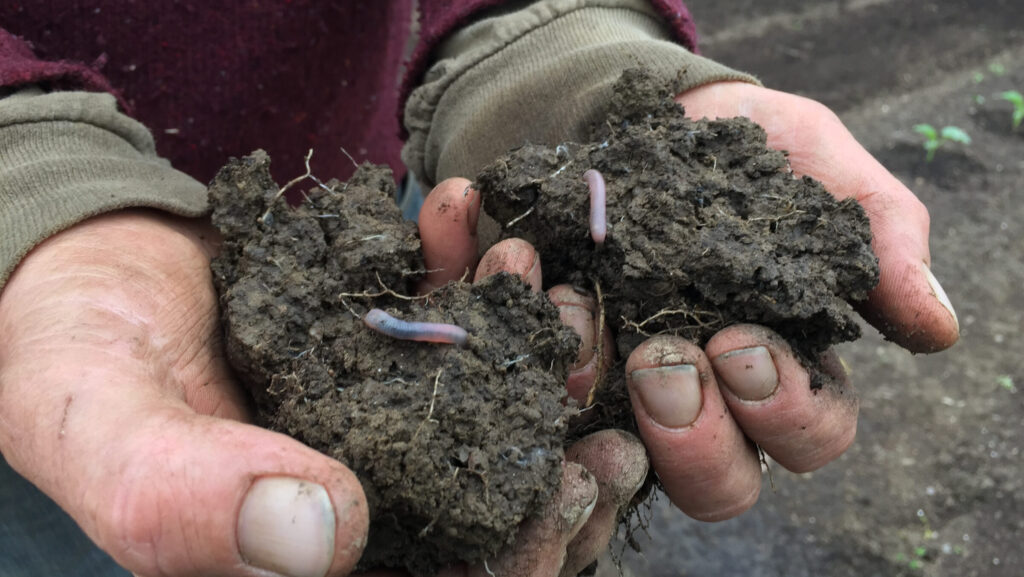
Soil Health
The soil is your best partner in caring for your trees long-term. Healthy soil determines the inherent capacity of the soil to function as a dynamic living system, support robust plant and microbial life, and maintain essential environmental and ecological functions. We recommend regular soil assessments (physical, biological, and chemical) at different times during the growing season to get a good picture of the limiting factors to growth on your site.
The best overall indicators of good soil health are:
1. Organic Matter
Soil organic matter (SOM) increases a soil’s ability to sequester carbon and hold on to water, enhances nutrient availability, and supports microbial populations necessary for a functioning soil ecosystem. Soils that are high in organic matter are typically darker in color, have more surface biology and visible soil organisms, contain more plant and insect biopores, resist surface crusting, smell ‘earthy sweet,’ and feel ‘greasy’ to the touch.
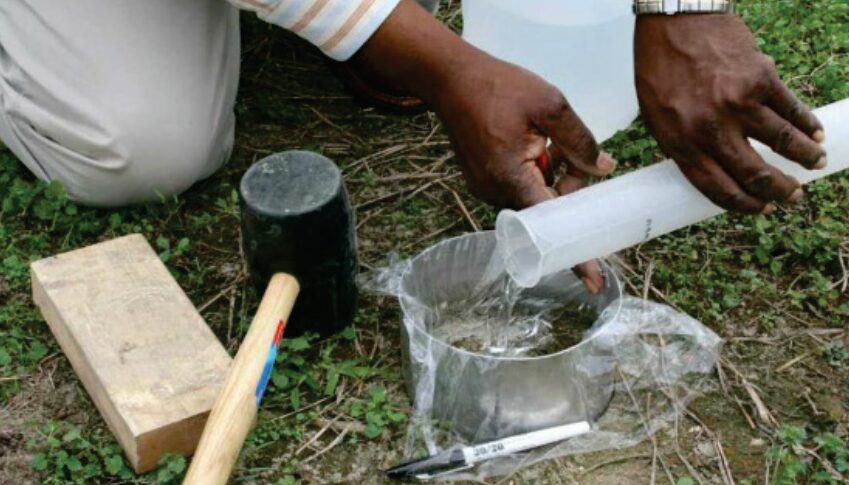
2. Water Infiltration
Monitoring the rate at which water is absorbed into soil gauges permeability, which indicates how well soils will retain moisture during dry spells and absorb water during high precipitation events. Improved infiltration of rainfall helps to reduce soil erosion and the loss of nutrients from land to water.
3. Compaction
Compaction impacts root growth and water infiltration and is often measured as a soil’s resistance in pounds per square inch (psi) to penetration from a probe such as a penetrometer or a wire flag. Limits to growth are generally observed once soil compaction reaches 300 psi. A soil core sample taken at various depths in the soil profile and measured (g/cm3) will give you the soil’s bulk density, another key compaction indicator. Lower bulk density typically allows for better root penetration and water infiltration. Once bulk density exceeds 1.7 g/cm3, roots are no longer able to penetrate through the soil.
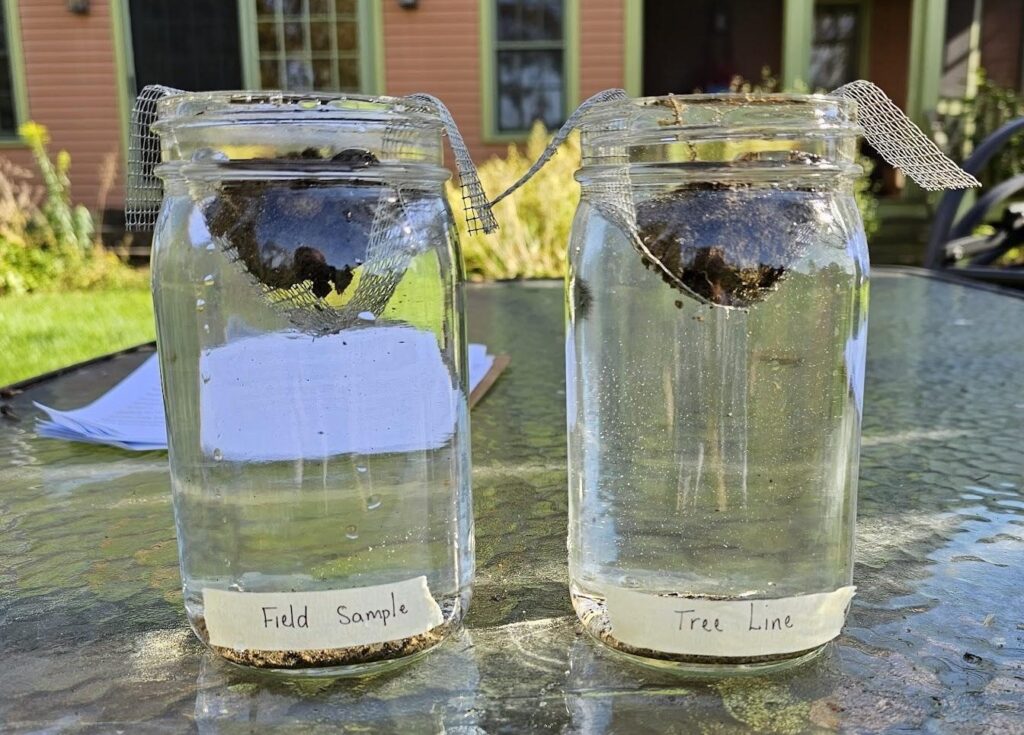
4. Aggregate Stability
Aggregate stability measures the movement of soil particles against flowing water, as in the case of heavy rainfall events. Soils that disintegrate quickly have low aggregate stability, whereas soils that retain their structure and allow water to fully penetrate indicate higher stability, which is essential for good soil structure and water retention. A slake test measures how soil aggregates behave when submerged in water for a few minutes or hours. Soils that disintegrate quickly have low aggregate stability. In contrast, soils that retain their structure and allow water to penetrate fully indicate higher stability, which is essential for good soil structure and water retention.
5. Nutrient levels
A chemical lab analysis provides important information about nutrient deficiencies or excesses that can inform the application of beneficial mineral amendments. A chemically balanced soil helps to foster and support a diverse and healthy soil microbiome with the proper ratios of minerals to water and air. Regardless of soil type or texture, strive to bring these four key nutrients into balance with one another: approximately 68% calcium, 12% magnesium, 4% potassium, and 2% sodium. While other specific macro and micronutrients can also be added to correct imbalances, these must ultimately be made available to the plant through diverse soil biota and well-functioning biological processes.
6. pH
Soil acidity alters plant metabolism and biomass yield. It also changes depending on seasonal factors, including soil moisture, temperature, and salinity. However, some nutrients can become unavailable to plants at specific pH levels, and consistently low pH may indicate the presence of heavy metal toxicity. Most soils in the Northeast are slightly acidic (pH value <7). Soil pH levels should be monitored periodically and, if necessary, increased gradually with applications of calcium carbonate or dolomitic lime.
There are many resources online to help you learn about soil health and various in-field assessment techniques:
- Soil Health Soil Testing and Soil Amending – Maine Organic Farmers and Gardeners
- New York Soil Health Initiative
- Soil Assessment Methods | AHDB
- NRCS Soil Health Assessment Guides
- Soil Health Indicators | NRCS East National Technology Support Center
- Cropland In-Field Soil Health Assessment Guide | USDA
- Cornell Soil Health Manual Fact Sheets
- Comprehensive Assessment of Soil Health (CASH) Manual, Ed. 3.2

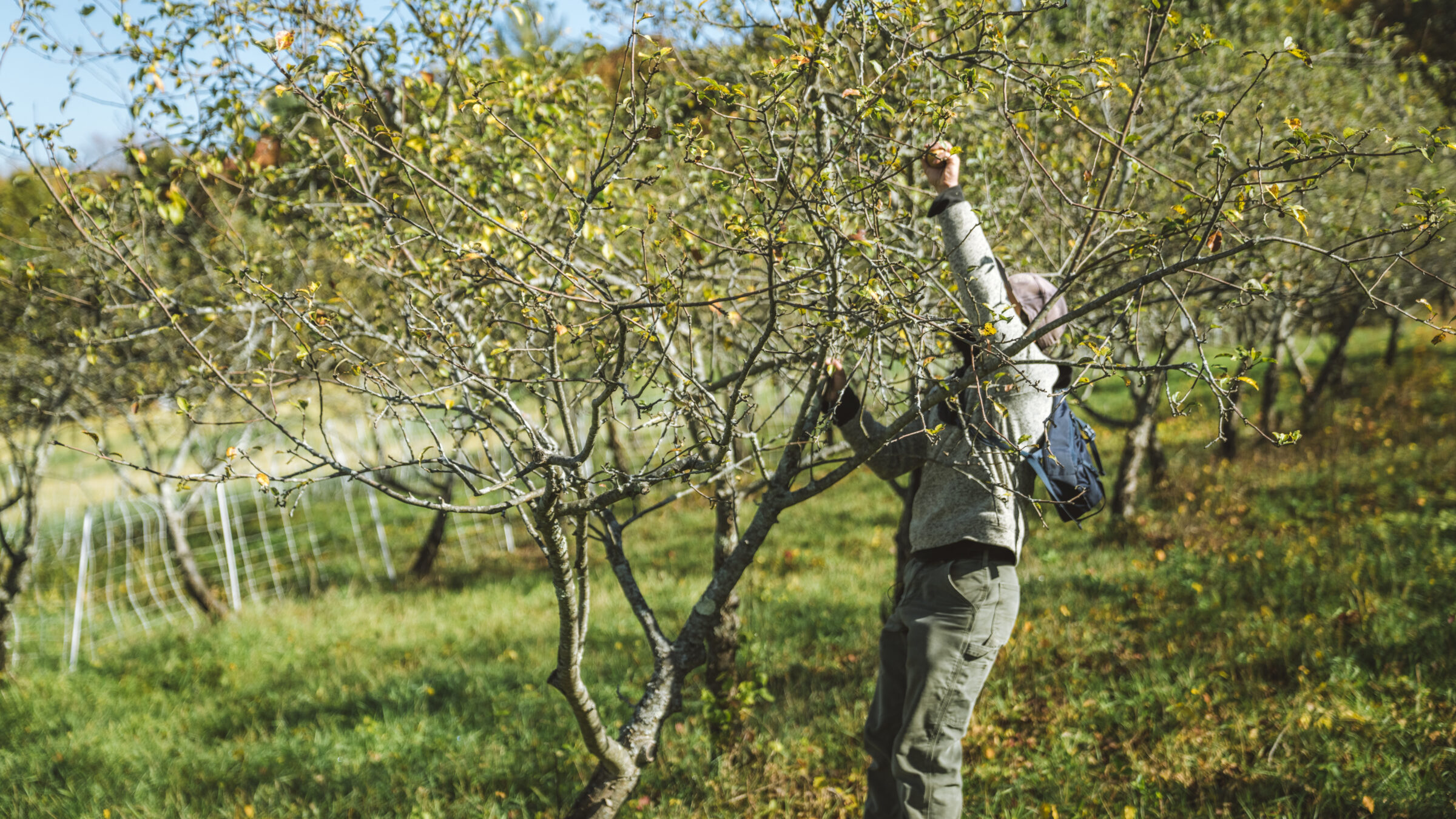
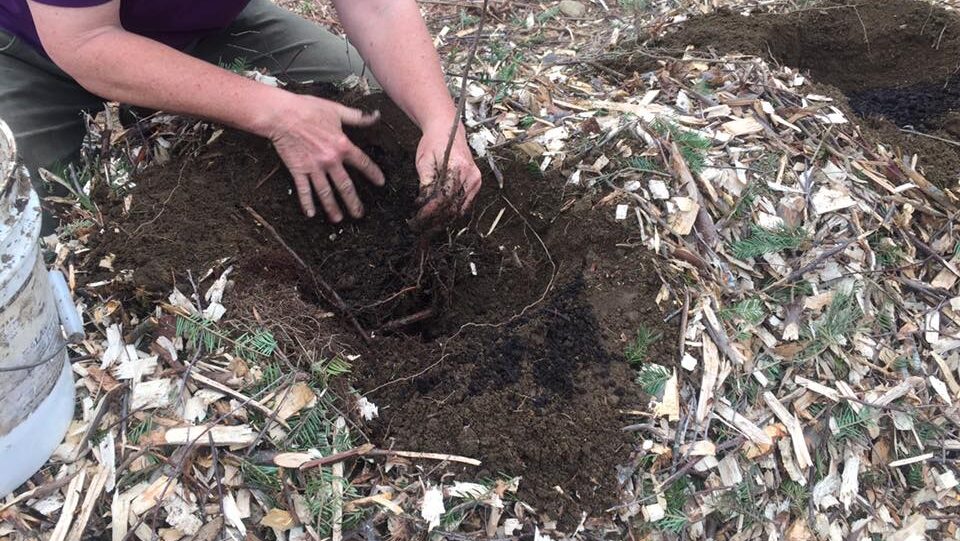
Comments (0)